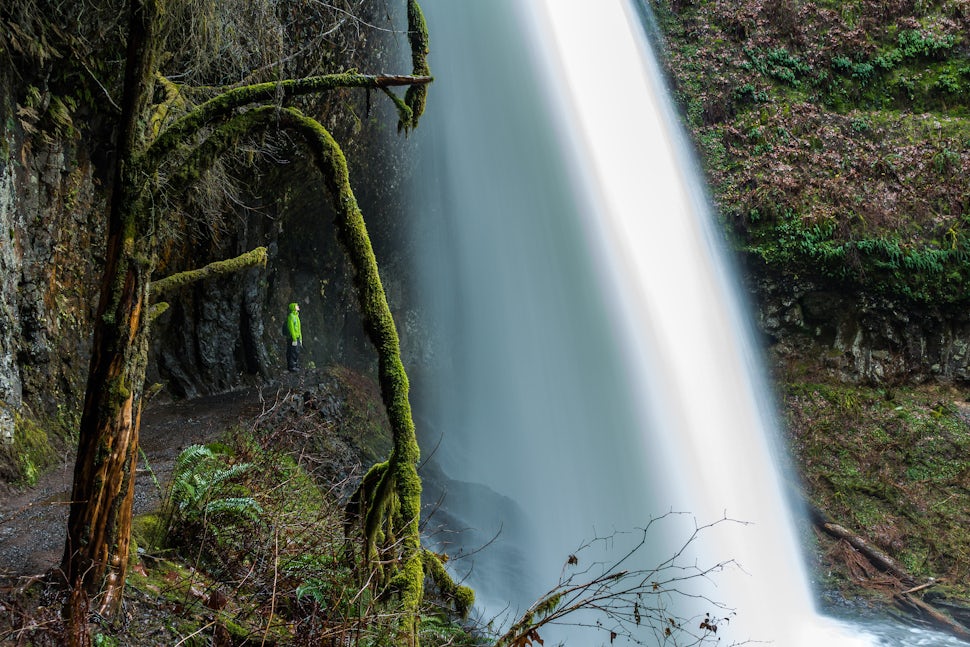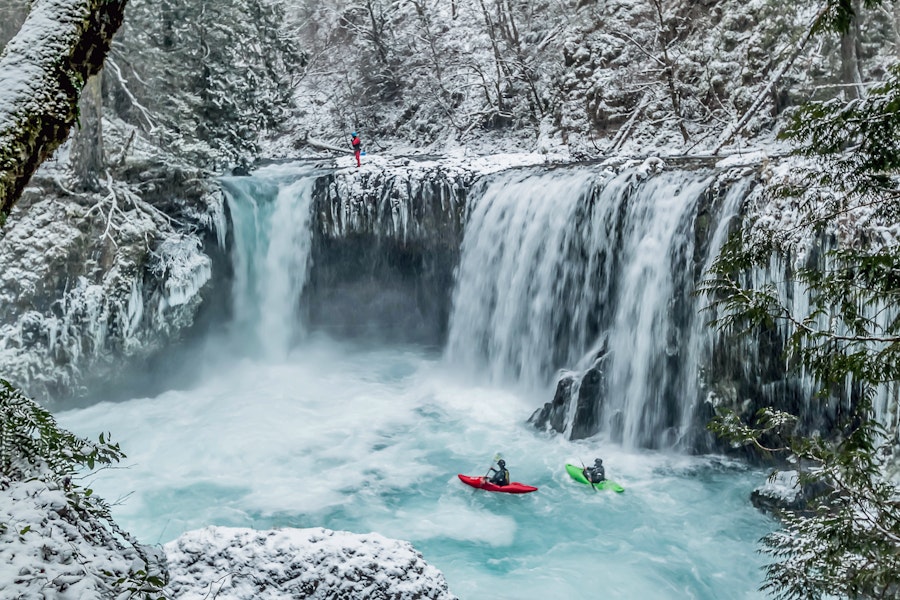5 Ways to Embrace the Soak of Pacific Northwest Winters
If you can't beat 'em, join 'em.

Pacific Northwest winters are notoriously wet. Drenching rainstorms are the norm from October to April. While many weekend warriors shelter inside for the off-season, you don’t have to let the wet weather put a stop to your outdoor adventures. Instead, embrace the soak with these activities that are at their peak in the rainy season.
1. Stand next to a waterfall.

There’s nothing quite as powerful as a waterfall running at peak flow and there’s certainly no shortage of waterfalls in the Pacific Northwest. Since most waterfalls are located well below the range crests, the trails to them are generally accessible without any specialized snow or ice equipment throughout the winter. The best part – winter crowds at the region’s most popular falls are far lower in the winter than in the summer.
2. Go to the ocean.

Storms coming off the Pacific – the same storms that bring the Pacific Northwest its abundant rain – produce intense waves all along the rocky coast. The result? Spectacular shows of crashing waves throwing spray tens of feet into the air with fog-enshrouded bluffs in the background. Set up camp at the tree line during major storms and watch the waves throw 30-foot logs at the shoreline from the dry comfort of your tent.
3. Warm up in a hot spring.

Soaking in a hot spring is the perfect answer to cold, rainy weather – you’re going to get wet anyway! Pair a warm soak with a backcountry skiing trip or a waterfall hike for optimal post-adventure relaxation. And for the best ambience, search out a high-altitude spring where snowflakes will swirl down around you as you enjoy the warm water.
4. Explore the whitewater.

High water levels on most Pacific Northwest rivers throughout the winter makes for epic whitewater kayaking and rafting that can’t be matched during the dry summer. And with the huge number of rivers around, there are great stretches of water to choose from for any level of experience. Just be wary of repeated storms that drive the rivers to flood stage, when all but the most expert kayaker should get out of the water. There are also a ton of options for paddling calmer water.
5. Cast a fly line.

Steelhead and trout are running Pacific Northwest rivers throughout the rainy season, and fly fishing offers a chance to catch a delicious dinner. There are numerous guide services that run throughout the winter for beginners, and for the more experienced there are always plenty of secluded spots to fish in the maze of rivers that flow down from the coastal ranges. For the best conditions, go just as water levels begin to fall several days after a major storm.
Cover photo: Michael Graw
Don't see your favorite adventure on The Outbound? Show us by creating an adventure.
Please respect the places you find on The Outbound.
Always practice Leave No Trace ethics on your adventures. Be aware of local regulations and don't damage these amazing places for the sake of a photograph. Learn More
We want to acknowledge and thank the past, present, and future generations of all Native Nations and Indigenous Peoples whose ancestral lands we travel, explore, and play on. Always practice Leave No Trace ethics on your adventures and follow local regulations. Please explore responsibly!
Do you love the outdoors?
Yep, us too. That's why we send you the best local adventures, stories, and expert advice, right to your inbox.









